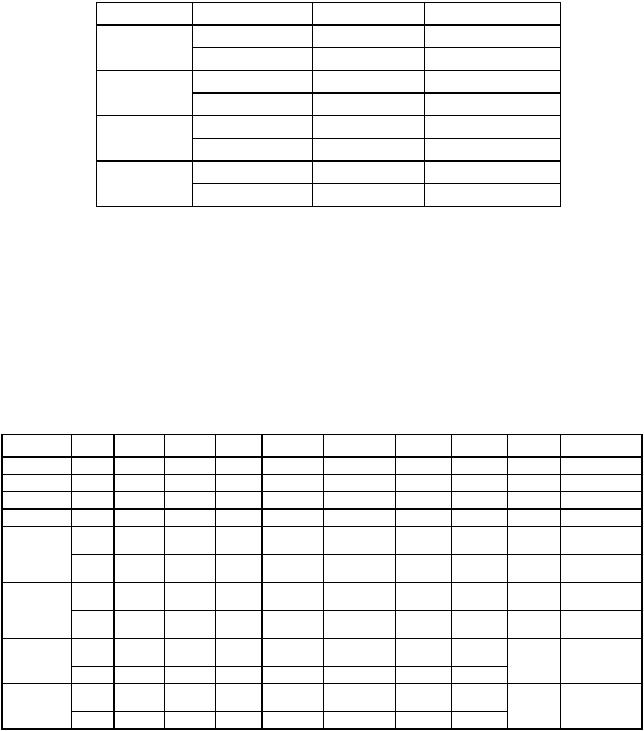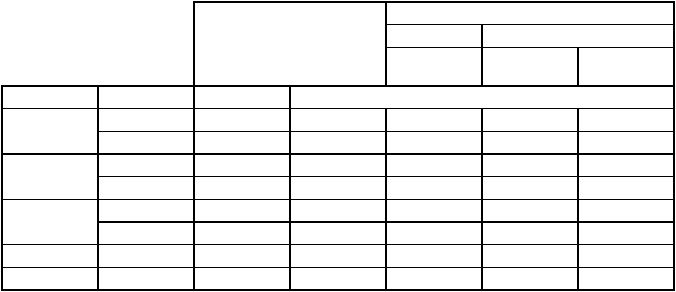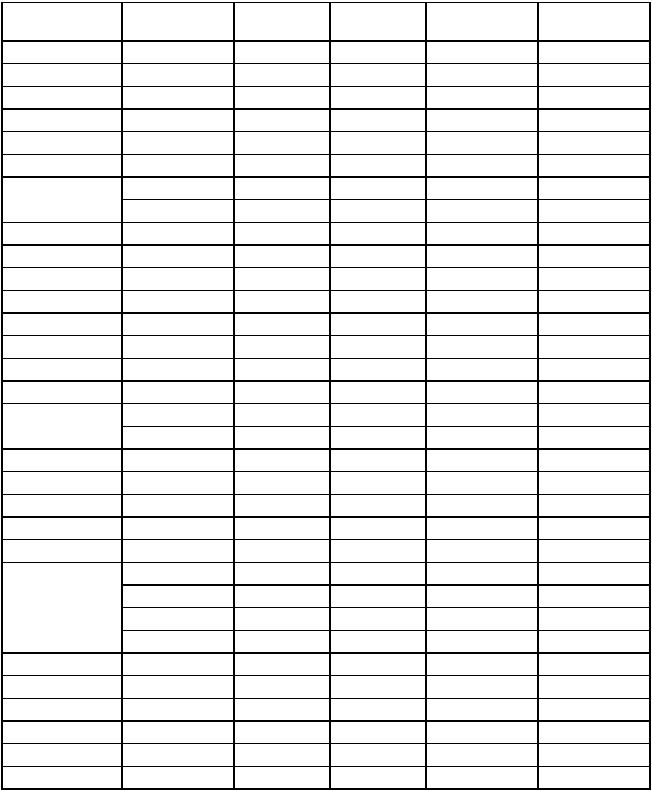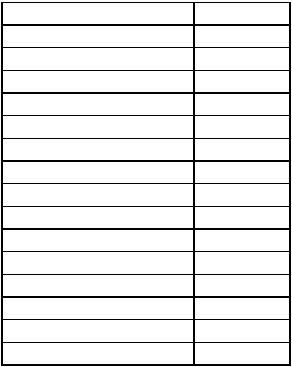
- •Table of Contents
- •List of Illustrations
- •List of Tables
- •2.1 Programmer's Model
- •2.1.2 Supervisor Programmer's Model
- •2.1.3 Status Register
- •2.2 Data Types and Addressing Modes
- •2.3 Data Organization in Registers
- •2.3.1 Data Registers
- •2.3.2 Address Registers
- •2.4 Data Organization in Memory
- •2.5 Instruction Set Summary
- •3.1 Address Bus
- •3.2 Data Bus
- •3.3 Asynchronous Bus Control
- •3.4 Bus Arbitration Control
- •3.6 System Control
- •3.7 M6800 Peripheral Control
- •3.11 Signal Summary
- •4.1 Data Transfer Operations
- •4.1.1 Read Cycle
- •4.1.2 Write Cycle
- •4.2 Other Bus Operations
- •5.1 Data Transfer Operations
- •5.1.1 Read Cycle
- •5.1.2 Write Cycle
- •5.1.4 CPU Space Cycle
- •5.2 Bus Arbitration
- •5.2.1 Requesting the Bus
- •5.2.2 Receiving the Bus Grant
- •5.3 Bus Arbitration Control
- •5.4 Bus Error and Halt Operation
- •5.4.1 Bus Error Operation
- •5.4.2 Retrying the Bus Cycle
- •5.4.4 Double Bus Fault
- •5.5 Reset Operation
- •5.7 Asynchronous Operation
- •5.8 Synchronous Operation
- •6.1 Privilege Modes
- •6.1.1 Supervisor Mode
- •6.1.2 User Mode
- •6.1.3 Privilege Mode Changes
- •6.1.4 Reference Classification
- •6.2 Exception Processing
- •6.2.1 Exception Vectors
- •6.2.2 Kinds of Exceptions
- •6.2.3 Multiple Exceptions
- •6.2.4 Exception Stack Frames
- •6.2.5 Exception Processing Sequence
- •6.3 Processing of Specific Exceptions
- •6.3.1 Reset
- •6.3.2 Interrupts
- •6.3.3 Uninitialized Interrupt
- •6.3.4 Spurious Interrupt
- •6.3.5 Instruction Traps
- •6.3.6 Illegal and Unimplemented Instructions
- •6.3.7 Privilege Violations
- •6.3.8 Tracing
- •6.3.9 Bus Error
- •6.3.10 Address Error
- •7.1 Operand Effective Address Calculation Times
- •7.2 Move Instruction Execution Times
- •7.3 Standard Instruction Execution Times
- •7.4 Immediate Instruction Execution Times
- •7.5 Single Operand Instruction Execution Times
- •7.6 Shift/Rotate Instruction Execution Times
- •7.7 Bit Manipulation Instruction Execution Times
- •7.8 Conditional Instruction Execution Times
- •7.9 JMP, JSR, LEA, PEA, and MOVEM Instruction Execution Times
- •7.10 Multiprecision Instruction Execution Times
- •7.11 Miscellaneous Instruction Execution Times
- •7.12 Exception Processing Execution Times
- •8.1 Operand Effective Address Calculation Times
- •8.2 Move Instruction Execution Times
- •8.3 Standard Instruction Execution Times
- •8.4 Immediate Instruction Execution Times
- •8.5 Single Operand Instruction Execution Times
- •8.6 Shift/Rotate Instruction Execution Times
- •8.7 Bit Manipulation Instruction Execution Times
- •8.8 Conditional Instruction Execution Times
- •8.9 JMP, JSR, LEA, PEA, and MOVEM Instruction Execution Times
- •8.10 Multiprecision Instruction Execution Times
- •8.11 Miscellaneous Instruction Execution Times
- •8.12 Exception Processing Execution Times
- •9.1 Operand Effective Address Calculation Times
- •9.2 Move Instruction Execution Times
- •9.3 Standard Instruction Execution Times
- •9.4 Immediate Instruction Execution Times
- •9.5 Single Operand Instruction Execution Times
- •9.6 Shift/Rotate Instruction Execution Times
- •9.7 Bit Manipulation Instruction Execution Times
- •9.8 Conditional Instruction Execution Times
- •9.10 Multiprecision Instruction Execution Times
- •9.11 Miscellaneous Instruction Execution Times
- •9.12 Exception Processing Execution Times
- •10.1 Maximum Ratings
- •10.2 Thermal Characteristics
- •10.3 Power Considerations
- •10.4 CMOS Considerations
- •10.5 AC Electrical Specification Definitions
- •10.6 MC68000/68008/68010 DC Electrical Characteristics
- •10.7 DC Electrical Characteristics
- •10.13 MC68EC000 DC Electrical Specifications
- •11.1 Pin Assignments
- •11.2 Package Dimensions

Table 9-15. Conditional Instruction Execution Times
Instruction |
Displacement |
Branch Taken |
Branch Not Taken |
Bcc |
Byte |
10(2/0) |
6(1/0) |
|
Word |
10(2/0) |
10(2/0) |
BRA |
Byte |
10(2/0) |
— |
|
Word |
10(2/0) |
— |
BSR |
Byte |
18(2/2) |
— |
|
Word |
18(2/2) |
— |
DBcc |
cc true |
— |
10(2/0) |
|
cc false |
10(2/0) |
16(3/0) |
9.9 JMP, JSR, LEA, PEA, AND MOVEM INSTRUCTION EXECUTION TIMES
Table 9-16 lists the timing data for the jump (JMP), jump to subroutine (JSR), load effective address (LEA), push effective address (PEA), and move multiple registers (MOVEM) instructions. The total number of clock periods, the number of read cycles, and the number of write cycles are shown in the previously described format.
Table 9-16. JMP, JSR, LEA, PEA, and MOVEM Instruction Execution Times
Instruction |
Size |
(An) |
(An)+ |
–(An) |
(d 16 ,An) |
(d 8,An,Xn)+ |
(xxx) W |
(xxx).L |
(d 8 PC) |
(d 16 , PC, Xn)* |
|
JMP |
— |
8(2/0) |
|
— |
— |
10 (2/0) |
14 (3/0) |
10 (2/0) |
12 (3/0) |
10 (2/0) |
14 (3/0) |
JSR |
— |
16 (2/2) |
|
— |
— |
18 (2/2) |
22 (2/2) |
18 (2/2) |
20 (3/2) |
18 (2/2) |
22 (2/2) |
LEA |
— |
4(1/0) |
— |
— |
8(2/0) |
12 (2/0) |
8(2/0) |
12 (3/0) |
8(2/0) |
12 (2/0) |
|
PEA |
— |
12 (1/2) |
|
— |
— |
16 (2/2) |
20 (2/2) |
16 (2/2) |
20 (3/2) |
16 (2/2) |
20 (2/2) |
MOVEM |
Word |
12+4n |
12+4n |
— |
16+4n |
18+4n |
16+4n |
20+4n |
16+4n |
18+4n |
|
M → R |
|
(3+n/0) |
(3+n/0) |
— |
(4+n/0) |
(4+n/0) |
(4+n/0) |
(5+n/0) |
(4+n/0) |
(4+n/0) |
|
|
Long |
24+8n |
12+8n |
— |
16+8n |
18+8n |
16+8n |
20+8n |
16+8n |
18+8n |
|
|
|
(3+2n/0) |
(3+2n/0) |
— |
(4+2n/0) |
(4+2n/0) |
(4+2n/0) |
(5+2n/0) |
(4+2n/0) |
(4+2n/0) |
|
MOVEM |
Word |
8+4n |
|
— |
8+4n |
12+4n |
14+4n |
12+4n |
16+4n |
— |
— |
R → M |
|
(2/n) |
|
— |
(2/n) |
(3/n) |
(3/n) |
(3/n) |
(4/n) |
— |
— |
|
Long |
8+8n |
|
— |
8+8n |
12+8n |
14+8n |
12+8n |
16+8n |
— |
— |
|
|
(2/2n) |
|
— |
(2/2n) |
(3/2n) |
(3/2n) |
(3/2n) |
(4/2n) |
— |
— |
MOVES |
Byte/ |
18 (3/0) |
20 |
(3/0) |
20 (3/0) |
20 (4/0) |
24 (4/0) |
20 (4/0) |
24 (5/0) |
|
|
M → R |
Word |
|
|
|
|
|
|
|
|
|
|
|
Long |
22 (4/0) |
24 |
(4/0) |
24 (4/0) |
24 (5/0) |
28 (5/0) |
24 (5/0) |
28 (6/0) |
|
|
MOVES |
Byte/ |
18 (2/1) |
20 |
(2/1) |
20 (2/1) |
20 (3/1) |
24 (3/1) |
20 (3/1) |
24 (4/1) |
|
|
R → M |
Word |
|
|
|
|
|
|
|
|
|
|
|
Long |
22 (2/2) |
24 |
(2/2) |
24 (2/2) |
24 (3/2) |
28 (3/2) |
24 (3/2) |
28 (4/2) |
|
|
n is the number of registers to move.
*The size of the index register (Xn) does not affect the instruction's execution time.
9.10 MULTIPRECISION INSTRUCTION EXECUTION TIMES
Table 9-17 lists the timing data for multiprecision instructions. The numbers of clock periods include the times to fetch both operands, perform the operations, store the results,
9-10 |
M68000 8-/16-/32-BIT MICROPROCESSORS USER'S MANUAL |
MOTOROLA |

and read the next instructions. The total number of clock periods, the number of read cycles, and the number of write cycles are shown in the previously described format.
The following notation applies in Table 9-17:
Dn — Data register operand
M — Memory operand
Table 9-17. Multiprecision Instruction Execution Times
|
|
|
|
|
Loop Mode |
|
|
|
|
Nonlooped |
Continued |
Terminated |
|
|
|
|
|
Valid Count, |
Valid Count, |
Expired Count |
|
|
|
|
cc False |
cc True |
|
Instruction |
Size |
op Dn, Dn |
op M, M* |
|
||
ADDX |
Byte, Word |
4(1/0) |
18(3/1) |
22(2/1) |
28(4/1) |
26(4/1) |
|
Long |
6(1/0) |
30(5/2) |
32(4/2) |
38(6/2) |
36(6/2) |
CMPM |
Byte, Word |
— |
12(3/0) |
14(2/0) |
20(4/0) |
18(4/0) |
|
Long |
— |
20(5/0) |
24(4/0) |
30(6/0) |
26(6/0) |
SUBX |
Byte, Word |
4(1/) |
18(3/1) |
22(2/1) |
28(4/1) |
26(4/1) |
|
Long |
6(1/0) |
30(5/2) |
32(4/2) |
38(6/2) |
36(6/2) |
ABCD |
Byte |
6(1/0) |
18(3/1) |
24(2/1) |
30(4/1) |
28(4/1) |
SBCD |
Byte |
6(1/0) |
18(3/1) |
24(2/1) |
30(4/1) |
28(4/1) |
*Source and destination ea are (An)+ for CMPM and –(An) for all others.
9.11 MISCELLANEOUS INSTRUCTION EXECUTION TIMES
Table 9-18 lists the timing data for miscellaneous instructions. The total number of clock periods, the number of read cycles, and the number of write cycles are shown in the previously described format. The number of clock periods, the number of read cycles, and the number of write cycles, respectively, must be added to those of the effective address calculation where indicated by a plus sign (+).
MOTOROLA |
M68000 8-/16-/32-BIT MICROPROCESSORS USER’S MANUAL |
9-11 |

Table 9-18. Miscellaneous Instruction Execution Times
|
|
|
|
Register→ |
Source** → |
Instruction |
Size |
Register |
Memory |
Destination** |
Register |
ANDI to CCR |
— |
16(2/0) |
— |
— |
— |
ANDI to SR |
— |
16(2/0) |
— |
— |
— |
CHK |
— |
8(1/0)+ |
— |
— |
— |
EORI to CCR |
— |
16(2/0) |
— |
— |
— |
EORI to SR |
— |
16(2/0) |
— |
— |
— |
EXG |
— |
6(1/0) |
— |
— |
— |
EXT |
Word |
4(1/0) |
— |
— |
— |
|
Long |
4(1/0) |
— |
— |
— |
LINK |
— |
16(2/2) |
— |
— |
— |
MOVE from CCR |
— |
4(1/0) |
8(1/1)+* |
— |
|
MOVE to CCR |
— |
12(2/0) |
12(2/0)+ |
— |
— |
MOVE from SR |
— |
4(1/0) |
8(1/1)+* |
— |
— |
MOVE to SR |
— |
12(2/0) |
12(2/0)+ |
— |
— |
MOVE from USP |
— |
6(1/0) |
— |
— |
— |
MOVE to USP |
— |
6(1/0) |
— |
— |
— |
MOVEC |
— |
— |
— |
10(2/0) |
12(2/0) |
MOVEP |
Word |
— |
— |
16(2/2) |
16(4/0) |
|
Long |
— |
— |
24(2/4) |
24(6/0) |
NOP |
— |
4(1/0) |
— |
— |
— |
ORI to CCR |
— |
16(2/0) |
— |
— |
— |
ORI to SR |
— |
16(2/0) |
— |
— |
— |
RESET |
— |
130(1/0) |
— |
— |
— |
RTD |
— |
16(4/0) |
— |
— |
— |
RTE |
Short |
24(6/0) |
— |
— |
— |
|
Long, Retry Read |
112(27/10) |
— |
— |
— |
|
Long, Retry Write |
112(26/1) |
— |
— |
— |
|
Long, No Retry |
110(26/0) |
— |
— |
— |
RTR |
— |
20(5/0) |
— |
— |
— |
RTS |
— |
16(4/0) |
— |
— |
— |
STOP |
— |
4(0/0) |
— |
— |
— |
SWAP |
— |
4(1/0) |
— |
— |
— |
TRAPV |
— |
4(1/0) |
— |
— |
— |
UNLK |
— |
12(3/0) |
— |
— |
— |
+Add effective address calculation time.
+Use nonfetching effective address calculation time.
**Source or destination is a memory location for the MOVEP instruction and a control register for the MOVEC instruction.
9-12 |
M68000 8-/16-/32-BIT MICROPROCESSORS USER'S MANUAL |
MOTOROLA |

9.12 EXCEPTION PROCESSING EXECUTION TIMES
Table 9-19 lists the timing data for exception processing. The numbers of clock periods include the times for all stacking, the vector fetch, and the fetch of the first instruction of the handler routine. The total number of clock periods, the number of read cycles, and the number of write cycles are shown in the previously described format. The number of clock periods, the number of read cycles, and the number of write cycles, respectively, must be added to those of the effective address calculation where indicated by a plus sign (+).
Table 9-19. Exception Processing
Execution Times
Exception |
|
Address Error |
126(4/26) |
Breakpoint Instruction* |
45(5/4) |
Bus Error |
126(4/26) |
CHK Instruction** |
44(5/4)+ |
Divide By Zero |
42(5/4)+ |
Illegal Instruction |
38(5/4) |
Interrupt* |
46(5/4) |
MOVEC, Illegal Control Register** |
46(5/4) |
Privilege Violation |
38(5/4) |
Reset*** |
40(6/0) |
RTE, Illegal Format |
50(7/4) |
RTE, Illegal Revision |
70(12/4) |
Trace |
38(4/4) |
TRAP Instruction |
38(4/4) |
TRAPV Instruction |
38(5/4) |
+ Add effective address calculation time.
*The interrupt acknowledge and breakpoint cycles are assumed to take four clock periods.
**Indicates maximum value.
***Indicates the time from when RESET and HALT are first sampled as negated to when instruction execution starts.
MOTOROLA |
M68000 8-/16-/32-BIT MICROPROCESSORS USER’S MANUAL |
9-13 |
